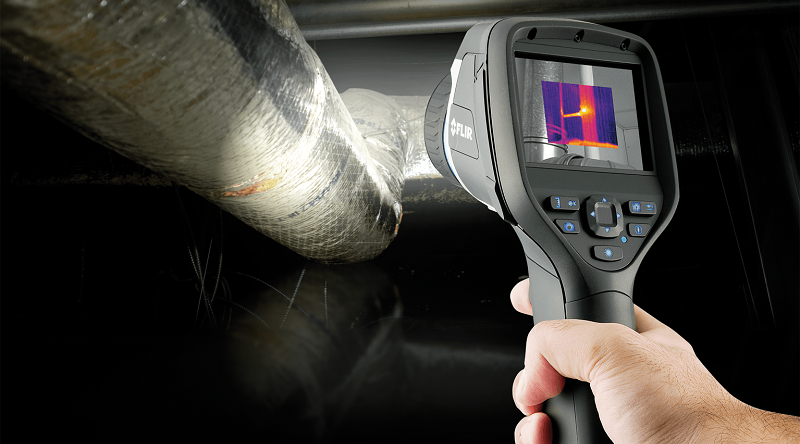What Makes Flir E60 One of the Most Functional Thermal Imaging Cameras
As someone who has worked as both a contractor and equipment inspector for the past two decades, shifting from the simple analog devices to the more sophisticated, multipurpose and modern digital ones, has had the biggest impact on my job. I think it’s safe to say that this statement is true for most, if not all test devices available on the market. In this article we’ll focus on the thermal imaging cameras.
In case you didn’t know, a thermal imaging camera is a test and measurement device used to measure temperatures from a safe, long distance. It can be used in multiple applications but its main uses are in commercial and industrial settings like the electrical, food and manufacturing industry. As their name implies, the main purpose of thermal imaging cameras is checking the temperature levels of electrical devices, and they do so by monitoring their electrical circuits, radiant heating and pipes for the purpose of finding potential infiltration and leaks. Regardless of which industry you work in, one of the better thermal imaging cameras is the FLIR E60, as it’s capable of delivering quality thermal images.
While the FLIR E60 has a smaller field of view, this isn’t necessarily a bad thing, as it results in smaller, but more detailed and superior images. When you’re measuring smaller surfaces, this is a huge benefit. Moreover, you can add lenses to test smaller objects from a distance, in case you can’t get close to the target for safety reasons. This speaks volumes about the flexibility of this thermal imaging camera.
The thermal sensitivity of the FLIR E60 is 50mK, a very respectable number. This allows a two part process in better image quality. Firstly, it means that you can measure smaller temperature differences, which helps you deliver more details and depth in the thermal image, especially when there are subtle differences in temperature. Secondly, the increased thermal sensitivity reduces the noise in the thermal image, which is important in applications where temperature differences are small, such as building, pest work, moisture detection and other precision applications.
The software featured in this thermal camera is comprehensive as well as relatively easy to use. Most of the processes inside the tools interface have wizards which can assist you in operating the software. From this program, it’s possible to import the images from your camera, then optimise them in different ways.
And lastly, you can install the iOS and Android app and connect your camera to it. While the app doesn’t have the functionality that the desktop app has, it still has plenty of features and allows you to import images from the camera. From your mobile device, you can put the images to a cloud service and share it with other employees or customers. This lets you get a second opinion on matters, which in many cases is very important.

